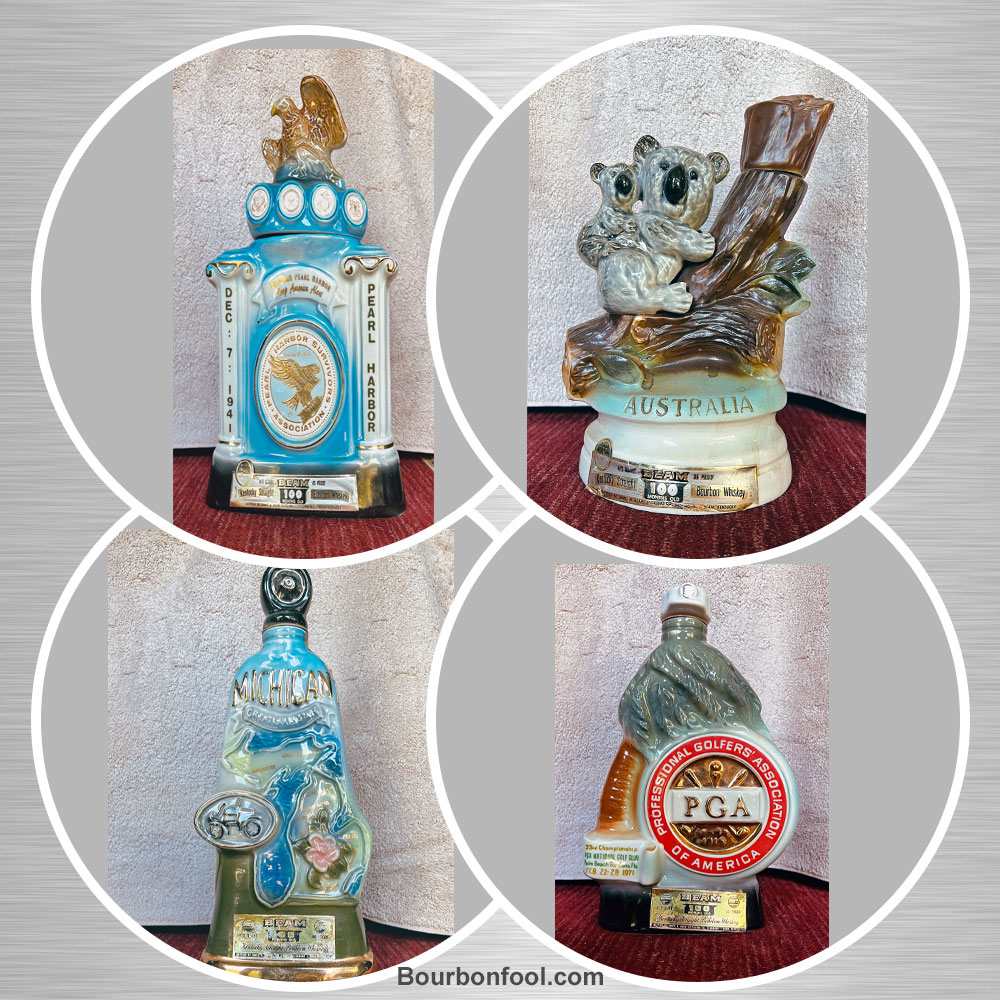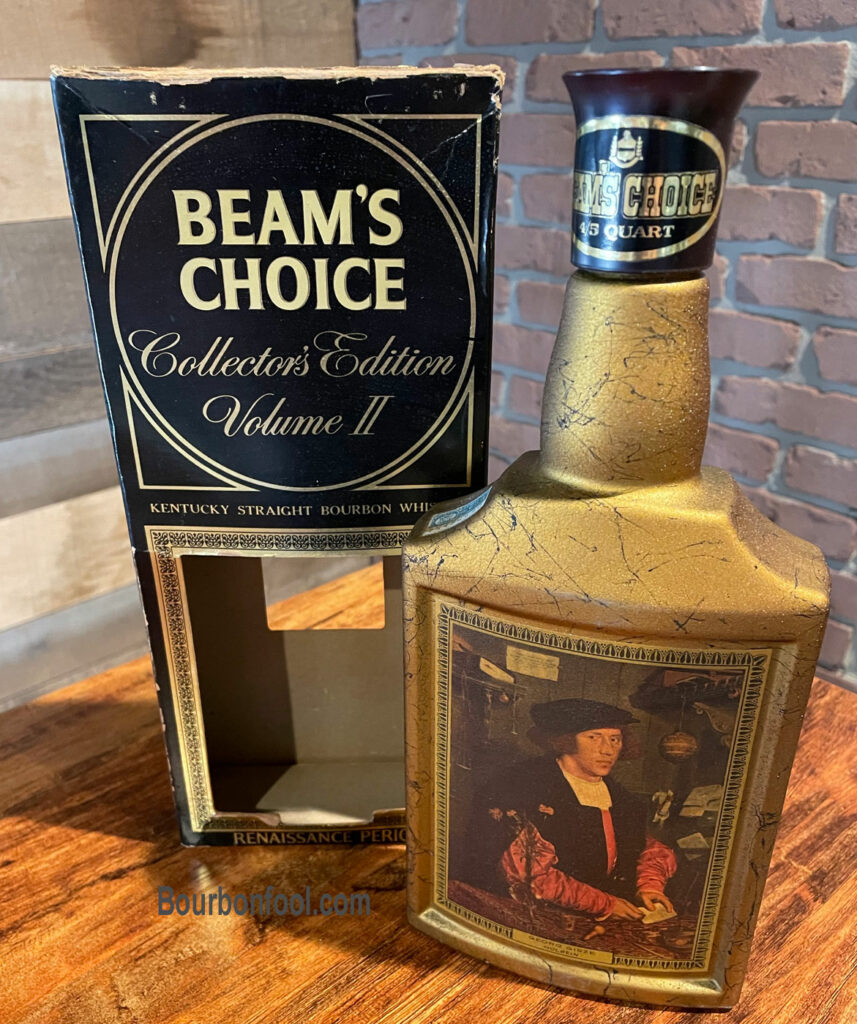Do you own one?
Do you own any decorative bourbon decanters? I have recently encountered some people who have collected decanters for years, and their collections contain many variations. This post contains critical information you will not want to miss, along with a warning about drinking the contents.

Surplus bourbon
In today’s world, there are not many distillers that are asking the question of how to sell surplus bourbon. I am not sure surplus bourbon would even exist anymore. It appears almost automatic that you can slap a creative label on a sourced bottle, and it will sell. If the whiskey inside is unique, it will likely sell for a higher price. Lately, the liquor does not need to be great; it only needs to be better than average to create interest.
We need to sell “Old Bourbon”
There was a time when distillers were sitting on vast stocks of bourbon whiskey that were not selling. Declining sales alone is a problem, but adding tax issues to your unsold inventory will add another layer of complexity and financial need. Jim Beam began releasing these decanters in 1953 to sell “Old Bourbon.” Some of these bottles contained bourbon that was over twelve years old. Take a moment to digest that statement. Twelve-year-old bourbon was not selling, so they placed filled unique containers to sell the idle inventory. It is hard to imagine that market conditions would ever force that to happen again.
Vodka and taxes
One of the things that helped create the decanter boom was that vodka sales were on the rise and brown water was not in favor. The Jim Beam company began producing decanter products in 1953. Placing straight bourbon in decanters made by the Regal China Company was a way to create excitement for a lagging product. In the sixties and seventies, people collected whiskey decanters. Wild Turkey began issuing a decanter each year starting in 1971. Stitzel Weller created Rip Van Winkle editions, and Ezra Brooks even made one in the shape of a potbelly stove.

Fine art collectors series
Take a moment to view the photo above of the decanter released in 1967. The George Gisze-Holbein bottle was part of the Beam Collectors Series Volume II. It contained eight-year-old 90-proof bourbon. A good friend of mine located this bottle for me, including the original box. George Gisze was a merchant who sat for the painting in the 1500’sand the artist was Hans Holbein, the younger. It is an exciting reminder that distillers went to unusual lengths to sell their products.
A Warning about older ceramic decanters. Beware of possible lead contamination.
Many discussions can be found about lead leaching into the whiskey from the mid-century ceramic decanters. Some enthusiasts drink the whiskey anyway, throwing away any concerns. I found the following information regarding the testing of bourbon from a decanter. The lab conducted the test and found that the whiskey had a lead content one thousand times higher than the acceptable limit in water. Those are results worth considering before you crack open that 1970’s era Corvette decanter or any decorative bourbon decanter to sample the bourbon.
Hello Don,
‘hope all is well with you, Denise and your family!
Thanks for another fun article! Wondering if you’ve ever been to Pearl’s restaurant in Elk Rapids? They have a most impressive collection of decanters! As a bonus they are just down the street from a MI distillery named Ethanology Distillation. Places to visit if and when you find yourselves north!
Regards,
Ken & Emily
Ken,
I miss seeing you and Emily and maybe we can meet for a drink soon. I have been to Ethanology and was impressed by some of its unique offerings. Take Care, Cheers!